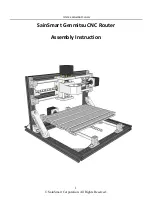
RDL-2000
User Manual
70-00143-01-01a
Proprietary Redline Communications © 2010
Page 48 of 50 September 20, 2010
Chapter
6
6
Reference Information
Table 10
:
Reference - RDL-2000 Technical Specifications
System Capability:
LOS, optical-LOS, and non-LOS (OFDM)
RF Band:
4.940 to 5.850 GHz
1
,
6
TDD, 2x2 MIMO
Channel Size:
5, 10, 20, and 40 MHz (software selectable)
1
Center Freq. Steps:
5 MHz
1,
2
Max Tx Power:
22 dBm
1, 3
(-22 dBm min.)
Rx Sensitivity:
-95 dBm (BPSK)
Data Rate:
300 Mbps wireless data rate
4
PoE Cable:
Up to 91 m (300 ft)
5
Network Attributes:
Transparent bridge
DHCP pass-through
Modulation:
BPSK to 64 QAM
Bi directional dynamic adaptive
Dynamic Control:
DFS, ATPC:
MAC:
PTP, Fast ARQ (Automatic Retransmit)
IIS (Intelligent Interference Sensing)
ACM (Adaptive Coding & Modulation)
FEC (Forward Error Correction)
Fragmentation, Concatenation
System Configuration:
Telnet,
Link Manager Application (Windows-based)
Network Connection:
2x 10/100 Ethernet (RJ-45)
PoE Cable:
Up to 91 m (300 ft)
5
Wireless Encryption:
AES-128
Operating Temp:
-35 C to 60 C
Power Consumption:
Max 6 W, PoE
Power Supply:
110/220/240 VAC 50/60 Hz
Compliance:
Safety:
IEC, and EN 60950
EMC:
EN 301 489-1, EN 301 489-17
RF:
FCC: part 15
Industry Canada: RSS 210
ETSI: EN 302 502, EN 301 893
1
Restricted by regional regulatory certification: ETSI 5.4-5.8 GHz, FCC/IC 5.8 GHz, Other 5.4-5.8 GHz
2
Center frequency is dependent on region.
3
Maximum power based on modulation and coding.
4
Actual Ethernet data throughput is dependent on factors including: protocols, packet size (1916 bytes
max.), burst rate, transmission latency, and link distance.
5
Total distance from RDL-2000 port to PoE port.
6
Determined be factory installed hardware.
All specifications are subject to change without notice.



































